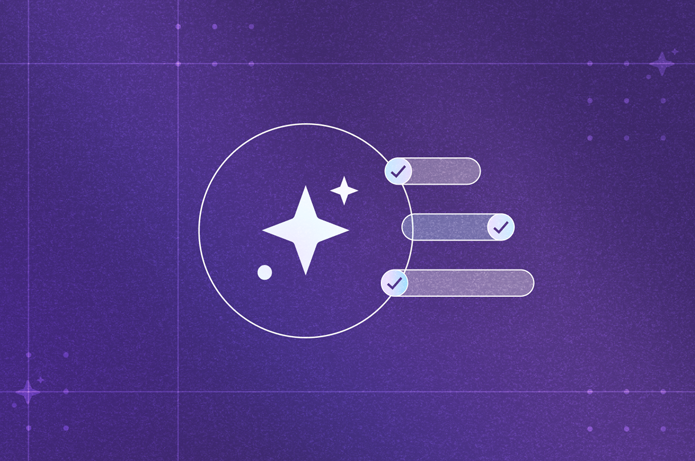How many times have you heard ‘multitasking’ listed as a strength during candidate interviews? Have you ever used this yourself? As businesses go global and continue to implement new technology, multitasking may almost seem like a survival skill. We spend our work days trying to make progress on multiple projects, while responding to emails and messages and attending meetings.
But research has shown that the human brain is incapable of multitasking. And the prevailing belief that multitasking leads to efficiency actually leads to frustration. It’s harmful to individual employees and teams. It can decrease productivity, increase mistakes, and discourage creative thought at your organization.
MIT’s study proves that, “as humans, we have a very limited capacity for simultaneous thought—we can only hold a little bit of information in the mind at any single moment.” Even the ability to task-switch, rapidly going back and forth between projects, “wastes time, makes you error-prone, and decreases your ability to be creative.”
What is monotasking?
Monotasking is the practice of focusing on a single task or activity with undivided attention, deliberately avoiding multitasking. It involves dedicating all of your mental resources and energy to one specific objective, leading to increased productivity, better quality work, and reduced stress levels. By prioritizing monotasking, you can achieve greater efficiency and effectiveness in their daily activities and work routines.
Monotasking is not a new concept. It’s also known as single-tasking the practice of dedicating oneself to a given task and minimizing potential interruptions until the task is completed or a significant period of time has elapsed.
It’s the polar opposite of multitasking, and delivers critical benefits for you and your teams.
The many workplace benefits of monotasking
When employees are encouraged to focus on one task at a time, eliminating distractions, productivity increases while burnout and turnover decreases. The American Psychological Association found that doing more than one task at a time, or switching between tasks, reduces productivity by 40%. Another recent study found that, “on average, it takes around 23 minutes for most workers to get back on task after an interruption.” Just think about how much time is wasted throughout the day just by responding to emails and Slack messages when you’re in the middle of a project. This also drains your energy, increasing the risk of errors, and negatively impacting the quality of your work.
Monotasking can boost self-discipline, preserve energy, and equip you and your employees to do your best work.
4 ways to move from multitasking to monotasking
In our hectic, fast-paced, always-on business world, distractions have become part of our daily lives, and multitasking has been used as a mark of success for far too long. Returning to focusing on one project at a time will take discipline and practice, along with a commitment to retrain our brains.
Here are four ways to help your teams, yourself, and the broader organization make this shift.
Reset expectations
It’s standard practice in many companies to encourage, and even expect, everyone to multitask. Many interviews include a question about the prospective employee’s multitasking ability, with a strong “yes” required to be considered. Responding immediately to Slack messages and email is also an expectation within many organizations and teams, making it difficult to find time to focus throughout the day. Just as employees get into their next task, they may receive an email notification or last-minute meeting request, and feel the need to respond or attend. The first step toward supporting an organizational shift toward monotasking is resetting expectations. This requires conducting an honest evaluation of current expectations, and how these may be encouraging multitasking, therefore negatively impacting productivity.
Leadership training may be helpful to communicate the pitfalls of multitasking and the benefits of multitasking, emphasizing the importance of focus and the role it plays in a healthy workplace.
Require scheduled breaks
In his book Stolen Focus, Johann Hari talks about the importance of built-in breaks. Without scheduled breaks, both leaders and employees will naturally lose focus, subconsciously instituting their own “break” to alleviate mental exhaustion. Researchers have found that the ideal rhythm is 52 minutes of work followed by a 17-minute break. This may sound like nothing will ever get done, but the study revealed that employees who followed this formula were more productive than those who didn’t. Taking regular breaks allows employees to return to work refreshed and able to focus on the task at hand. Consider establishing work break protocols with the assistance of company leaders, to ensure buy in from the top down. These breaks can be a hard stop, or as Hari suggests, the permission to simply let the mind wander. Hari notes that creativity comes from making the connection between two or more ideas that a person already held, and mind wandering is a source of creative development.
Tie tasks to business goals and objectives
Meaningful work is one of the keys to employee wellbeing, and it also helps sharpen and maintain our focus. Hari says that employees focus for longer periods of time when their work is clearly defined, meaningful, not just perceived as busy work, and is just at the edge of the worker’s ability. Establish company- and team-wide goals and KPIs, and then train managers to tie individual employee tasks to those goals. This can be done as part of the performance review process at the beginning of the year, and ideally, with regular check-ins throughout the year as well. Also consider requiring kick-off meetings for new projects, involving everyone who will be part of each phase. This puts everyone on the same page, providing full context and an opportunity to talk about impact—how the project will contribute to the broader business.
Talk about tactical ways to improve focus
As we’ve already discussed, successfully moving from a multitasking mindset to monotasking involves shifting culture and expectations, and also rewiring our brains.
Providing employees with tactical ways to improve their focus is a great place to start. Here are four to help you get started. Try these yourself, and then share them with your teams:
- Implement meeting-free Fridays. Also known as Calm Fridays, having an entire day to do deep work without the distraction of meetings can help employees begin building their monotasking muscle.
- Encourage blocking off time on calendars to do deep work during the week as well.
- Turn off email pop-up notifications and Slack notifications on desktop and mobile. It may be helpful to start by doing this only during focus time, but consider turning off notifications permanently, and setting specific times to check both throughout the day. If you do this, communicate your plan to your manager and team.
- Determine how long you’d like to spend focused on a particular task, and then set a timer. This can keep you accountable for monotasking for the duration of this time, and also show how quickly you may be tempted to “just check on something else.”
HR can lead the charge
Too many leaders and employees have long believed that multitasking and working to exhaustion earns a badge of honor—and is the only way to gain promotions and succeed. But as we’ve discussed, what’s really earned is wasted time, reduced creativity, and more mistakes. HR can lead the shift from multitasking to monotasking, encouraging the level of focus that leads to greater productivity and higher quality of work—while personally enjoying the benefits of this approach as well.
Read this blog to learn how embracing discomfort at work can help you become a more effective leader and better support employees.

Melanie Wagner is a writer and editor. Along with scholarly work, she has written a non-fiction children’s book about escaping bullying and finding love and acceptance in unexpected places. She received her BA in professional and technical writing, her MA in English and Ed Leadership, and her PhD in criticism and theory of literature. Melanie describes herself as a lifelong learner and loves to teach, even though she is currently a retired professor.


.png)
.png)
.png)




.png)




.png)


.png)



